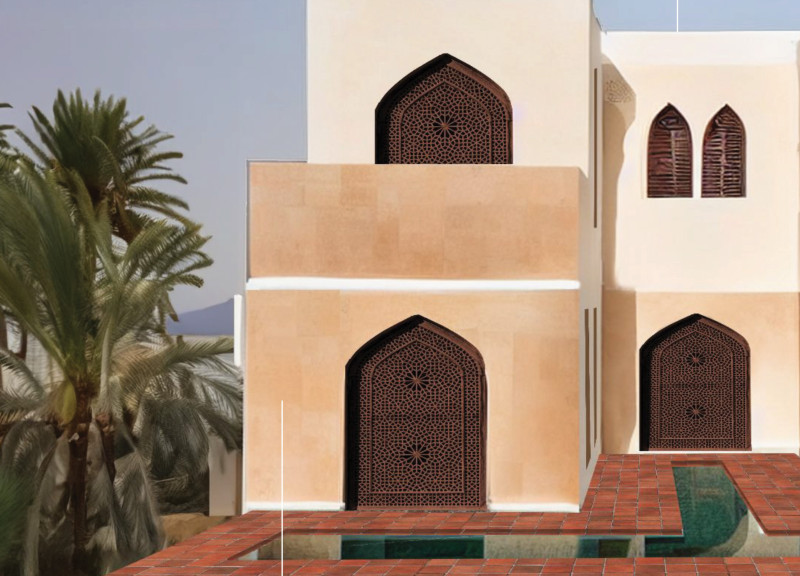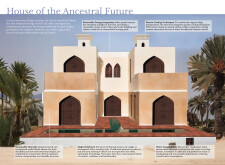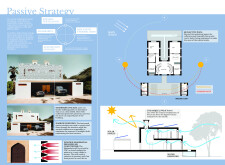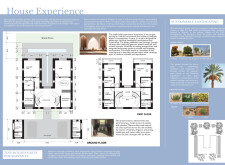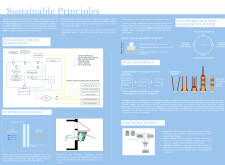5 key facts about this project
# Analytical Report on the "House of the Ancestral Future"
## Overview
Located in the United Arab Emirates, the "House of the Ancestral Future" integrates traditional Emirati architectural elements with contemporary sustainability practices. The design aims to create a residence that honors the local culture while utilizing modern technologies to promote an eco-friendly living environment.
## Cultural Integration and Sustainability
### Heritage and Design Philosophy
The project's design philosophy emphasizes a thoughtful balance between cultural heritage and modern innovation. Traditional Emirati patterns and forms, especially evident in communal spaces like the majlis, reflect the social values of the region. Simultaneously, the structure incorporates advanced sustainable technologies to reduce its environmental impact and improve energy efficiency.
### Material Selection and Sustainability
A diverse array of materials has been chosen for their ecological benefits and aesthetic appeal. Rammed earth and compressed stabilized earth blocks provide structural durability and thermal mass, while the incorporation of wood in the mashrabiya enables airflow and light penetration without sacrificing privacy. Additionally, aluminum panels for the facade enhance solar shading, and integrated solar panels generate renewable energy. The use of terracotta surfaces facilitates evaporative cooling, contributing to a more comfortable indoor environment.
## Passive Design Strategies
### Ventilation and Climate Control
The architectural layout incorporates passive cooling techniques crucial for the UAE's climate. Features such as the mashrabiya serve as ventilation elements, allowing for natural light while mitigating heat gain. Traditional wind towers (barjeel) promote air circulation, potentially reducing indoor temperatures significantly.
### Landscape and Water Management
The landscape design emphasizes local biodiversity through the selection of indigenous plants, which enhances ecological sustainability. Shade trees, culturally significant in Emirati tradition, offer both aesthetic and environmental benefits. A graywater reuse system is integrated into the design, promoting water conservation by recycling water for irrigation and other non-potable uses.


